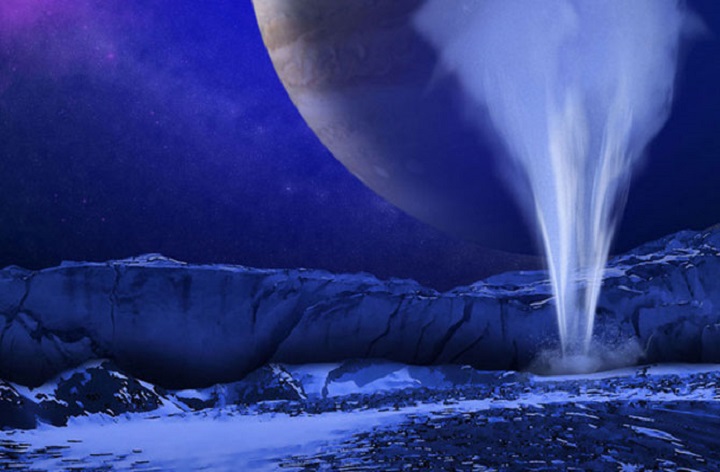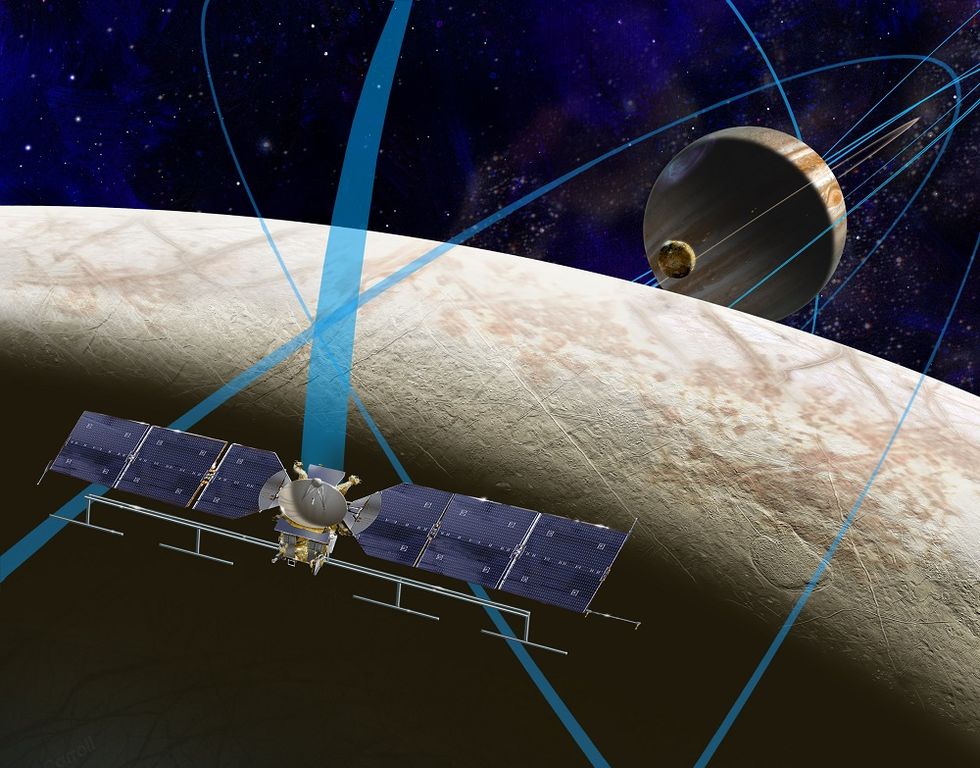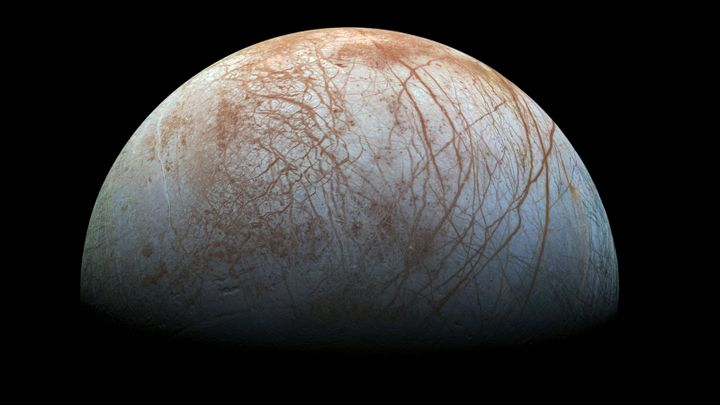
For decades, astronomers and scientists have been fascinated by Jupiter's moon of Europa. As one of the four major satellites discovered in 1610 by Galileo Galilei, its discovery helped to trigger a revolution in astronomy. And ever since the Voyager missions, which passed through the Jovian system in 1979, Europa has come to be seen as one of the prime candidates in the search for life beyond Earth.
These findings were further supported by the Galileo mission of the 1990s, which provided ample evidence of a salt water ocean beneath the moon's icy mantle. Little wonder then why NASA is planning on sending a mission to Europa in the coming years. And just last month, NASA announced that its mission concept had successfully completed its first major review and is now entering into the next phase of development.
The announcement was made on June 17th from NASA's Science Mission Directorate in Washington, where associate administrator John Grunsfeld announced that they had completed their first step on the mission. “Today we’re taking an exciting step from concept to mission, in our quest to find signs of life beyond Earth," he said. "Observations of Europa have provided us with tantalizing clues over the last two decades, and the time has come to seek answers to one of humanity’s most profound questions."
The current scientific consensus is that Europa's interior is differentiated between an icy mantle and a rocky core. Between the outer layer of ice and the core, a warm water ocean is believed to exist, one that is capable of supporting life. This ocean is kept warm thanks to the influence of Jupiter, who's gravity causes Europa's interior to flex, producing geothermal energy that heats the water closest to the planet's core.

Artistic concept of a water jet on Europa's icy surface, with Jupiter and the Sun in the background. Credit: K. Retherford/Southwest Research Institute
For decades, the possibility of life on Europa has been the subject of interest for both scientists and speculative thinkers. For instance, Arthur C. Clarke's Space Odyssey series deals with the possibility of Jupiter being transformed into a small sun so that life on Europa could flourish. And then there's Europa Report, a more recent film about a fateful manned mission to the moon that discovers life, with frightening consequences!
Naturally, NASA's proposed Europa Mission is different from fiction. Taking a page from the successful flybys of the Jovian system previously conducted by the Voyager, Galileo, Cassini and (most recently) the New Horizons space probe, they plan is to send a satellite that will conduct a detailed, multi-year survey of the planet from orbit, returning valuable data on its composition and interior structure.
The mission will begin with the launch of a solar-powered spacecraft to Jupiter sometime in the 2020's. This craft will arrive in orbit of Europa several years later, where it will begin circling the moon every two weeks for a period of three years, providing many opportunities for close flybys. In total, the mission will involve 45 flybys at altitudes ranging from 25 to 2,700 kilometers (16 to 1,700 miles).
During each flyby, the spacecraft will take high-resolution images of the moon's icy surface and investigate the composition and structure of its shell and interior using a arsenal of scientific instruments..These instruments were announced this past May, where members of the mission team indicated that they had selected what the instruments the spacecraft would be using to scan Europa for life.

Artist's rendering of NASA's Europa Mission concept, where a spacecraft would make multiple close flybys of the icy Jovian moon. Credit: NASA/JPL-Caltech
According to Curt Niebur, a Europa program scientist, the payload would include cameras and spectrometers to produce high-resolution images of Europa’s surface. Also, the spacecraft would use an ice penetrating radar to determine the thickness of the moon’s icy shell and search for subsurface lakes similar to those beneath Antarctica. The mission also will carry a magnetometer to measure the strength and direction of the moon’s magnetic field, which will allow scientists to determine the depth and salinity of its ocean.
NASA's Jet Propulsion Laboratory (JPL) will be responsible for managing the project, and instrumentation and support are being supplied by the JPL, NASA's Applied Physics Lab (APL), Arizona State University in Tempe, the University of Texas at Austin, the Southwest Research Institute in San Antonio, and the University of Colorado, Boulder.
“It’s a great day for science,” said Joan Salute, Europa program executive at NASA Headquarters in Washington during the recent press conference. “We are thrilled to pass the first major milestone in the lifecycle of a mission that will ultimately inform us on the habitability of Europa.”
Got ideas that could help humanity find life in our Solar System? Then go to the Launch your Challenge page and be prepared to make your idea come true!
Top Image Credit: NASA








